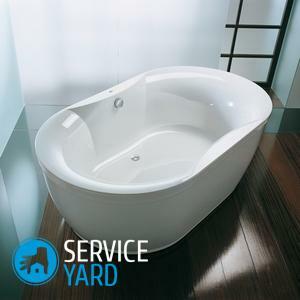Stone in interior decoration always looks good, solid. It comes in natural and artificial. Use decorative stone on the wall is possible in all areas - exterior, interior finishes, in various residential, not living rooms, kitchen apron design, doorways decorating terraces, fireplaces, window sills, plinths buildings.
The cost of these products is very different, depends on from what material it is. This granite, marble much more expensive artificial imitation of plaster, ceramics and so on. D. On the types of decorative stones for walls, installation inside the different rooms, self-stacking methods in detail in the text.
Content
- Benefits finishing stone
-
Types of stone for walls
- artificial
- natural
-
mounting Features
- How to choose a stone
- load calculation
- Surface preparation and laying of stone to
- The necessary tools for self-laying
-
Laying of stone
- Finishing
- Decorative stone in the interior of different rooms
Benefits finishing stone
As with all existing design options there are positive and negative points.

Pros:
- nice, looks expensive;
- durability, resistance to frost;
- fire safety;
- strength, wear resistance;
- resistance to chemicals.
Minuses:
- Gypsum is not suitable for wet areas;
- natural expensive.






Other finish should match the look of stone - granite looks great with a heavy oak door, the building blocks can be to stick even above it - then the ceiling color is also required appropriate. The lower parts of the walls are made most often.






Types of stone for walls
Natural harder for laying, due to greater weight, artificial - softer, lighter. Natural stone produced in natural conditions, advantageously crushing rocks. "False" is made of colored concrete, plaster, acrylic, polyester resin, mineral additives. Also in its structure is often present clay, crushed stone, glass elements, steel, various pigments. Natural for the design of interior space is used less frequently than artificial - due to the fact that most of the cold. Small pieces, pictures of him adorn any room.

artificial
Which there is an artificial stone:
- granite - matte, glossy, textured. Compression performed with firing of feldspar, clay, colorants. Resistant to temperature changes;
- conglomerates - are composed of polyester resin, marble and granite chips, quartzite. Natural material in the agglomerate to 90%. Not resistant to high temperatures (even from the radiator), abrasion, but look integrally;
- brick or concrete tiles - consists of Portland cement, dye, sand, expanded clay, pumice, plasticizers. Repellent may be added, reinforcing components;
- gypsum-based - consists of high-quality gypsum, slaked lime, coloring agents, and water. These building blocks can be done independently, in their ebb form watertight coatings. It is very easy, cheap;
- flexible - looks like wallpaper. This textile to which is applied a thin slice of sandstone. Suitable for decorating the hard to reach places, vapor permeable, wear-resistant;
- acrylic-based - consists of crumbs jade, serpentine, jade, amazonite, granite, mixed with acrylic resins. He is eco-friendly, waterproof.






With a properly sized option, any room into a beautiful work of art. The above types of raw materials maintainable, secure, pleasant appearance, durable, long lasting. They are easy to handle, transport, weigh less natural.
See also:Gray wallpapers in the interior 70 photo

natural
Natural stone for interior use different methods of education, methods of production. This lining will last for decades, even centuries. His views:
- granite - in the composition of the rocks is quartz, mica, feldspar. Considered the most solid, strong and durable in the world, but relatively easy to process. It possesses frost resistance, moisture resistance, dielectricity. Life while decorating the walls - from 150 years;
- Marble - rock mainly composed of calcite, various minerals. By color - beige, gray, black, yellow, blue and others. He is hard, antistatic, abrazivoustoychiv, water resistance, eco-friendly. In processing, mining complex, but the price is acceptable - the technology is constantly being improved;
- travertine - a calcium carbonate, an intermediate between soft and friable solid marble limestone. It formed near mineral sources that are carried to the surface of the calcium salt, limestone, carbon dioxide. Simple in production, there is a color of pale-green, red-red, beige, milky white. It has low thermal conductivity, excellent cold resistance, low price;
- shale - a rock of medium-temperature, low-temperature minerals. Roadworthy material is coated with a special varnish. It has hygienic, bactericidal, resistant to water, temperature extremes. Can have streaks of: brown, beige, blue and green;






- talkohlorit - from chlorite, magnesite, talc. For registration surfaces is used in the form of bricks, tiles. It is used most often in the bath, the sauna, as the heat quickly, maintaining a constant temperature and humidity. Its thermal resistance more than + 1500C. Color - graphite, gray-green;
- Jadeite - consists of sodium oxide and silica-alumina, silica. Very similar to jade, emerald happens, graphite, yellow, gray, red. It is sold in the form of tiles, bricks and mosaics. It is durable, teploemok, waterproof;
- Onyx - a fibrous variety of quartz with impurities. This ornamental stone overly complicated to handle, costly, and can burst if overheated. Lining out of it looks gorgeous - if lit from within. Material durable, warm to the touch, color - Sun succinic, emerald green, reddish-brown;
- serpentine - silicate, magnesium oxide in water. Looks good, it is realized in the form of tiles, with thickness up to two cm. Tight, secure, like a jade, but the lining of both of these stones is comparatively durable - about fifteen years;
- dolomite - carbonate of magnesium, calcium, iron is the impurity, clay. Often yellow, red, white, pearlescent lustrous satin, matte finish. It is sturdy, durable, eco-friendly. Has healing properties - is able to soothe the human nervous system.

It is believed that some stones are radioactive. This is not entirely true - commercially available materials are subject to strict radiological control.
mounting Features
Mounting decorative trim made on the pre-aligned wall, using cement, glue mixtures. Stick tiles, pebbles alone is not difficult, you only need high-quality raw materials, tools. In the freshly home cladding made only after the structure of shrinkage, otherwise it can quickly fall off. "Wild" stone is placed at random, square, rectangular shape - straight rows.






How to choose a stone
Decorating the walls is divided into inner, outer. For interior applications generally use artificial stone - lighter, cheaper, it is easier to install. Very popular now a brick, a granite or marble, sandstone, bassoon and others. Use of natural limestone, shell rock, slate, at least - marble, granite, onyx. Natural fit to create expensive, almost "eternal" interiors.
See also:30 options for combining wallpaper
Choosing the material for the design, should decide in what room it will be used. Different places require rocks with different properties - water resistance, thermal insulation, thermal stability. For kitchen apron is not recommended to apply the coating with a complex texture - cleaned of fat droplets, eating pieces of his extremely problematic.






load calculation
Wall load is calculated independently or with the help of special online calculators. It is necessary to take into account of what made the wall, its thickness. If the weight per square meter of tiles is within 25 kg, then the surface is not borne excessive load. OSB withstand considerable weight. The smaller, lighter stones, the greater the chance that they will stay for a long time, hard. Material consumption depends on the surface to be treated, which is calculated by multiplying the length of the wall in the height. repair experts recommend buying a stone with a margin of 5-10%, especially if it will have to cut here and there, to observe a certain figure or is he just too fragile.

Surface preparation and laying of stone to
Before you start to spread stones surface, need to align the walls - well, like a wallpaper. All previous coatings should be removed - remains of old paint, wallpaper, wire brush to clean off. Next, the base need to be carefully primed, then you can put tile. From the materials he needed a stone tile adhesive. The heavier the lining, the greater the need to glue the "stronger" than it should be. There are two types: on the basis of plaster and cement. On the packaging is usually written, to see where exactly is meant this or that part.

The necessary tools for self-laying
For laying their hands will need a lot of tools:
- spatulas - plain and notched;
- steel tape measure;
- building level;
- rubber mallet;
- square;
- submachine gun;
- a mixer for preparing an adhesive;
- bolgarka disk stone;
- brush or roller;
- brush with iron teeth;
- block of wood, lighthouses;
- container grout, adhesives;
- brush to smooth seams,
- spray for repelling agent,
- adhesive mixture.

Laying of stone
When prepared all the finishing materials and tools, start gluing.
Its stages:
- gluing;
- laying of tiles;
- rustovanie;
- protective coating composition.

Initially, knead the adhesive is applied to the wall in small portions - it should not dry out, be thick, but not crumble. The adhesive composition is distributed with a smooth trowel and on the tiles smeared gear. You can use "liquid nails", and cement. Every detail of tightly pressed to the wall. After completion of the bonding surface and welds removed all superfluous. It is desirable that the solution did not get to the front part - it will be difficult to clean. Building blocks firmly mounted on the wall of wood, plasterboard, aerated concrete with proper bonding with a special compound. If the tiles are glued to the mortar, it is first necessary to fill the masking grid on it - the plaster. If necessary, parts are cut with a hacksaw, grinder.
See also:Decorative wallpaper under a brick
Stack should start from the corner, from the bottom up, row by row. Typically, attachment is done under unravel, ie plitochki be a little distant from each other, the space between them is filled with a solution, the excess of which must be removed. expected seam width of about one-half cm. If the joints are not provided, then the bricks are placed maximally tightly close to each other.





Finishing
Finishing involves removing excess solution from the joints, their staining in color bricks or tiles, applying a protective layer.
The coating is required to be applied, where:
- the house has children, pets;
- Wall is in a wet basement;
- stone colored paint;
- cheap low quality bricks.






Protection is applied when already attached all the tiles, the joints have dried. The composition is applied by roller, brush, spray gun. The facade of the building is "decorated" only in dry weather.

Decorative stone in the interior of different rooms
For bathroom design used natural onyx, marble, mosaic approach, a "cascade" of different stones. Corridor walls covered them partially, fully, spread arch. Well look properly placed light sources - as a stone looks more favorable. When used without additional lighting, in places that are not visible from the street, it turns out the effect of the cave.






In the living room there are often houseplants - they also combine with the original walls. Glass vases, metal furniture parts, clay flower pots will fall very "in the subject." Spread completely bedroom space, another living room, the stone is not recommended - it is very cold, it is better to limit brick or stone doorway, partial decoration partitions (if any) between the bedroom and another room of chipboard, plywood.

The corridor trim protruding corner onyx backlight LEDs creates magical composition. Stone in the interior composition combined with decorative plasters, stretch ceilings, textured wallpaper. You can lay out the bricks pattern that resembles a tree, city, figures of living beings, abstraction. Balcony trim partially or completely, but heavy materials should be avoided in order to avoid collapse.






The use of any stone, especially invoicing, is not recommended in the children - children are often running around, falling down, they can be seriously injured by the impact of a stone wall.
When a finished room area very small, then the stone should be abandoned altogether, as he "takes" a part of the living space. As an option - to use a flexible artificial or natural thin tiles - up to five millimeters. The spacious rooms active material is applied without limitations.






Stones on vertical surfaces of old decorated houses. This outer front, inner wall, door slopes, stoves surface. However, excessively cramped apartment, this material will be clutter. With proper installation it will last for many years, all the while delighting the eye. Do tile, as well as the right pokleit it is possible independently or to seek help from professionals. This material is appropriate to be used for loft style, Gothic, classical, Empire, art deco, African, English, Scandinavian, vintage, fusion of minimalism.



